Press Release
2035 3 25
Apple launch new HomePod,Bring breakthrough sound quality and intelligent experience
Menghadirkan kualitas suara terbaik di kelasnya, kemampuan Siri yang ditingkatkan, dan pengalaman rumah pintar yang aman dan terlindungi
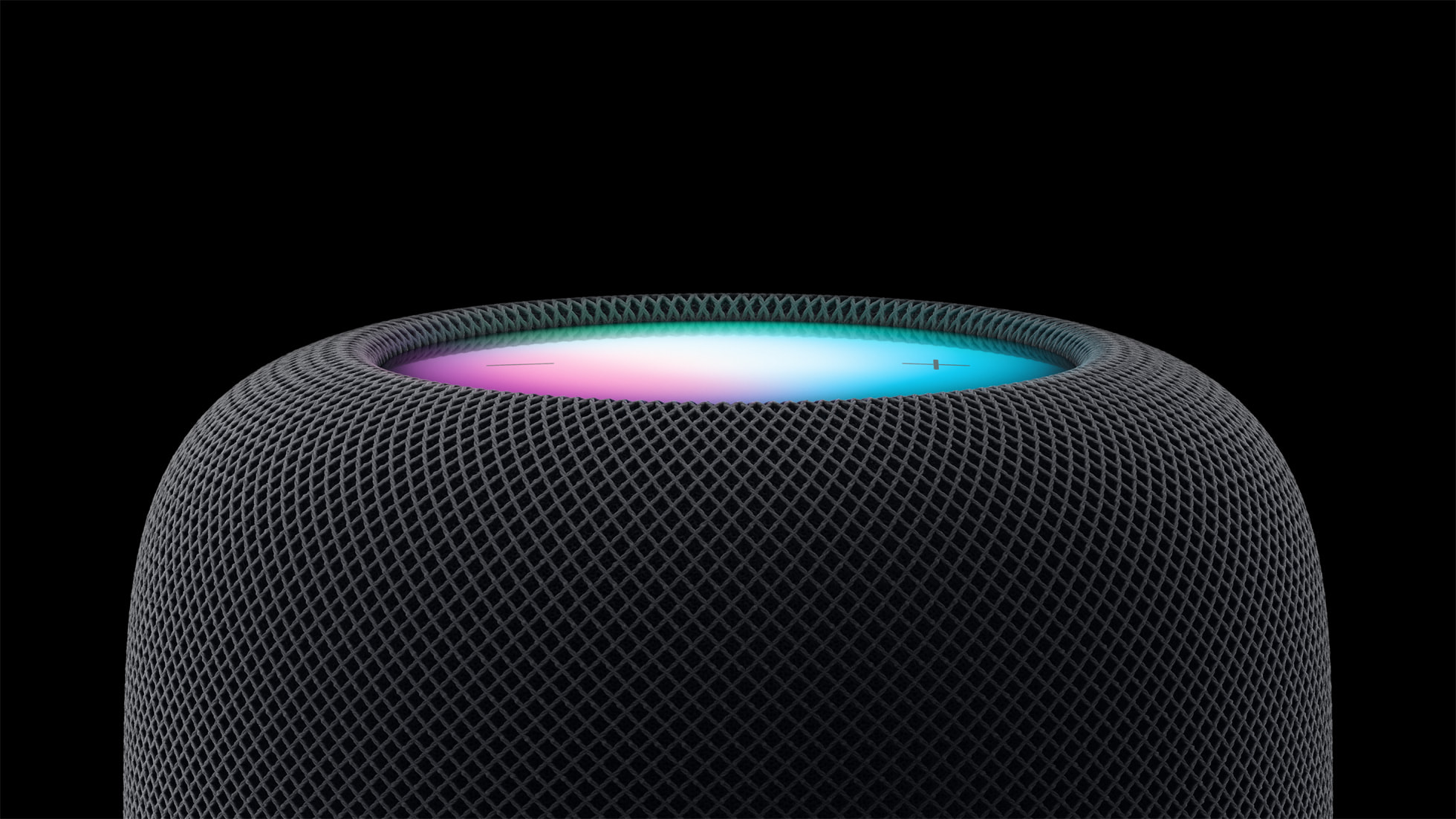
HomePod 汇Mengintegrasikan beberapa inovasi Apple, kecerdasan Siri, dan fitur rumah pintar untuk menghadirkan pengalaman mendengarkan yang belum pernah ada sebelumnya kepada pengguna。
California-based Cupertino Apple announced today the launch of the HomePod (2nd generation). This powerful smart speaker features a beautiful iconic design that brings users a new generation of acoustic experience. The HomePod brings together multiple Apple innovative technologies and Siri intelligence, offering advanced computational audio technology, supporting immersive spatial audio tracks playback, and presenting an unprecedented listening experience. The HomePod brings a new and convenient way to manage daily tasks and control smart homes. Users can use Siri to create smart home automation functions, receive notifications when smoke or carbon monoxide alarms are triggered at home, or check room temperature and humidity - all without lifting a finger.
The new HomePod is available for online ordering or through the Apple Store app starting today, and will be officially released on Friday, February 3rd.
“Using our professional audio technology and innovation, the new HomePod can deliver rich and deep bass, natural midrange, and clear and delicate treble,” said Greg Joswiak, Apple’s Senior Vice President of Global Marketing. “As HomePod mini has become increasingly popular, we have seen growing interest from users in a larger volume and more powerful acoustic performance HomePod. We are excited to bring the new generation HomePod to customers around the world.”
Beatiful Design
The new HomePod features a seamless acoustic mesh fabric and a backlit touch panel, with a beautiful design that complements any space. The HomePod is available in two finishes: white and a brand-new midnight color, which is made from 100% recycled fabric and comes with a color-matched braided power cable.
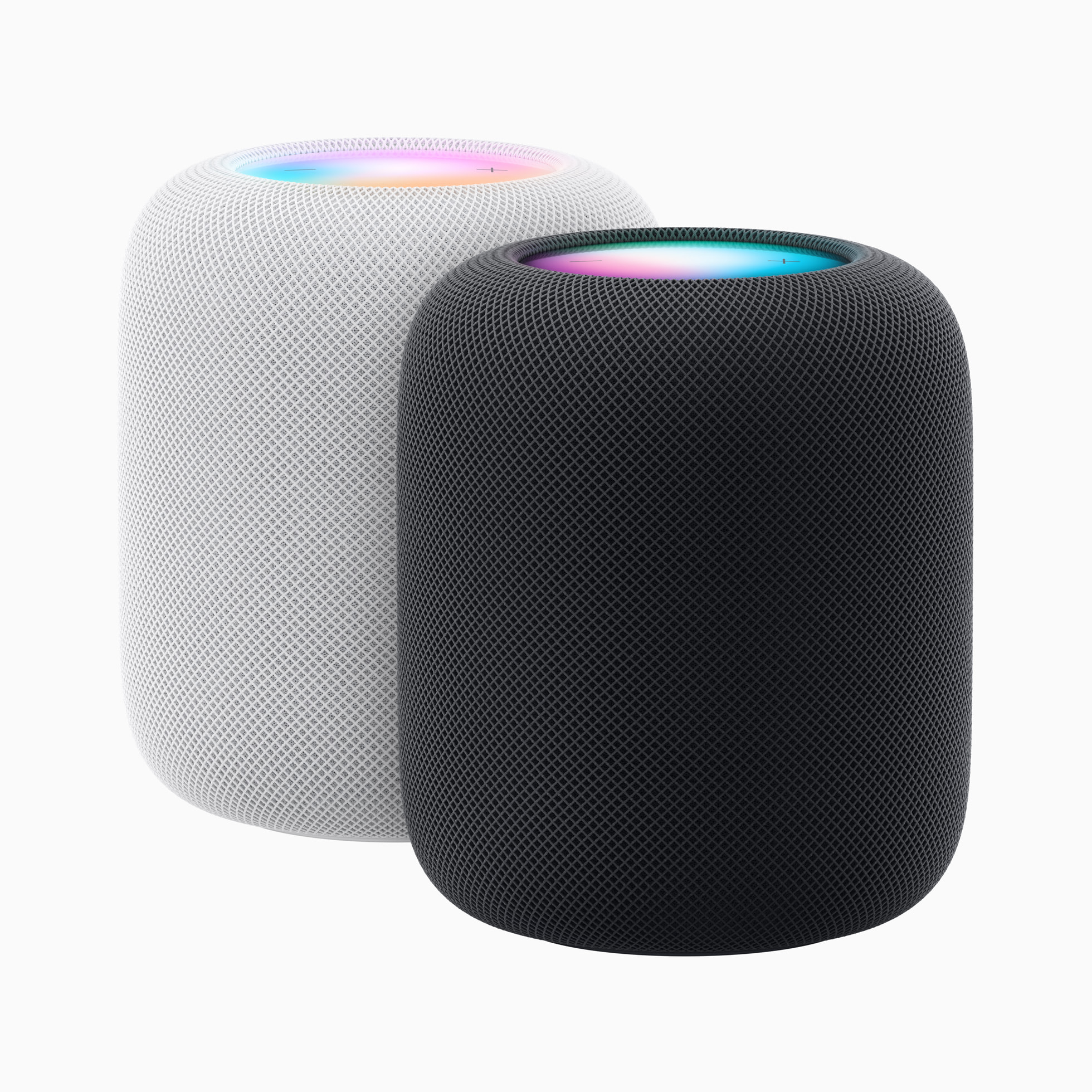
HomePod has a beautiful design, with a seamless acoustic mesh fabric and a backlit touch panel.
Powerful acoustic performance
The HomePod delivers outstanding sound quality with rich and deep bass and stunningly clear high frequencies. Custom-developed high-amplitude, low-distortion woofer, powered by a 20-millimeter high-excursion driver, built-in low-frequency calibration microphone, and a bottom-firing array of five beamforming tweeters work together to create a powerful acoustic experience. The S7 chip, combined with advanced software and sensing technology, provides even more advanced computational audio and fully unleashes the potential of the acoustic system, resulting in an unprecedented listening experience.
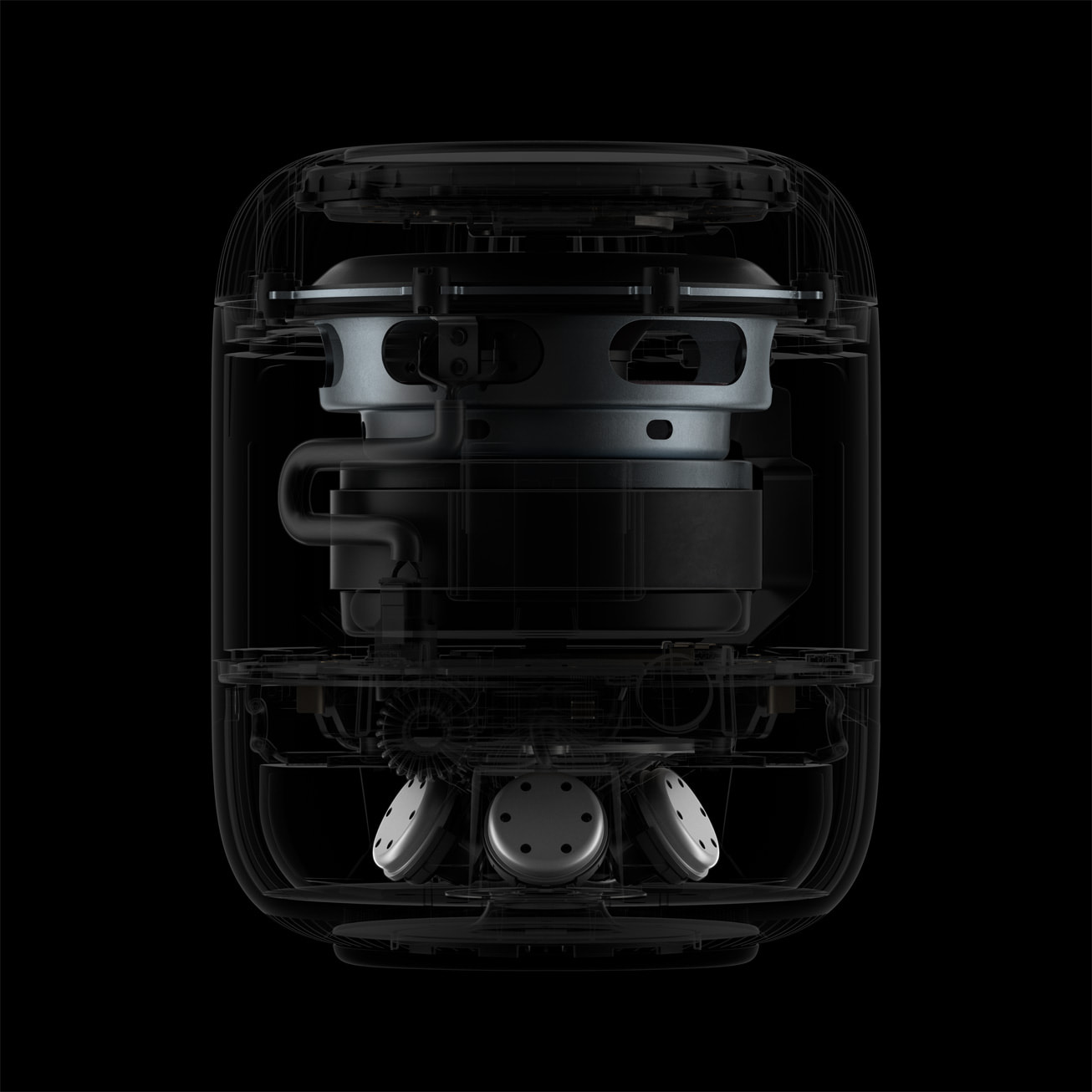
A high-amplitude low-frequency driver, a powerful motor, a built-in low-frequency equalizer microphone, and an array of five beamforming high-frequency units create a powerful acoustic experience.
Using indoor spatial awareness technology, HomePod can recognize sound reflections from nearby surfaces, determine whether it is near a wall or other surface, and adjust the audio in real-time. The beamforming array of 5 high-frequency drivers utilizes precise directional control to separate and direct direct sound and ambient sound, allowing users to indulge in clear vocals and rich instrumentals.
Users can listen to millions of songs from the Apple Music library through a single HomePod or enjoy spatial audio by combining two HomePods in a stereo pair. Users can also use Siri to learn about various music knowledge and search for music based on artist, song, lyrics, decade, genre, mood, or activity.
Multiple HomePods bring a better experience. Two or more HomePods or HomePod minis can unlock a range of powerful features. Utilizing the AirPlay 2 technology that supports multi-room audio, users can simply say “Hey Siri” or touch and hold the top of a HomePod to play the same song on multiple HomePods, or play different songs on different HomePods, or even use multiple HomePods for broadcasting, delivering messages to different rooms.
Users can also place two HomePods together to create a stereo pair. The stereo pair not only separates the left and right channels but also harmoniously plays stereo audio, creating a wider and more immersive sound field than traditional stereo speakers and presenting an exceptional listening experience.。
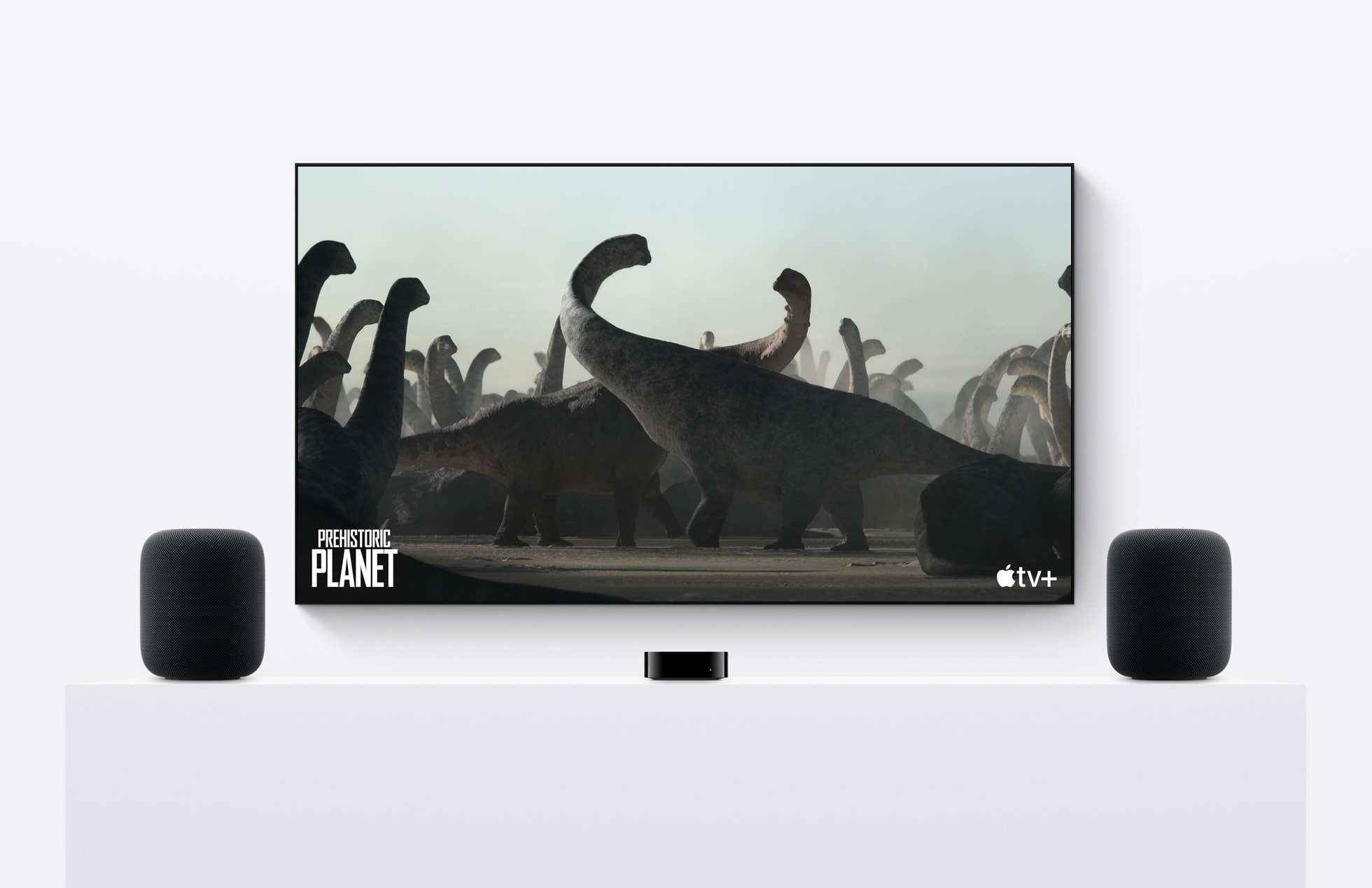
Users can use two HomePods to create a stereo pair, creating a wider and more immersive sound field.
Seamless integration with the Apple ecosystem.
With ultra-wideband technology, users can easily transfer any audio playing on their iPhone, such as their favorite songs, podcasts, or even phone calls, directly to HomePod. Anyone in the room can hold their iPhone near the HomePod and suggested playback options will automatically appear on the iPhone screen, making it easy to control audio playback or receive personalized song and podcast recommendations. HomePod can also recognize up to 6 different users’ voices, allowing all family members to easily listen to their personal playlists, set reminders, and manage calendar events.
The “Find My” feature of HomePod allows users to make misplaced Apple devices play a sound to help locate them, such as an iPhone. Users can also ask Siri about the location of friends or family members (who have chosen to share their location using the “Find My” app).
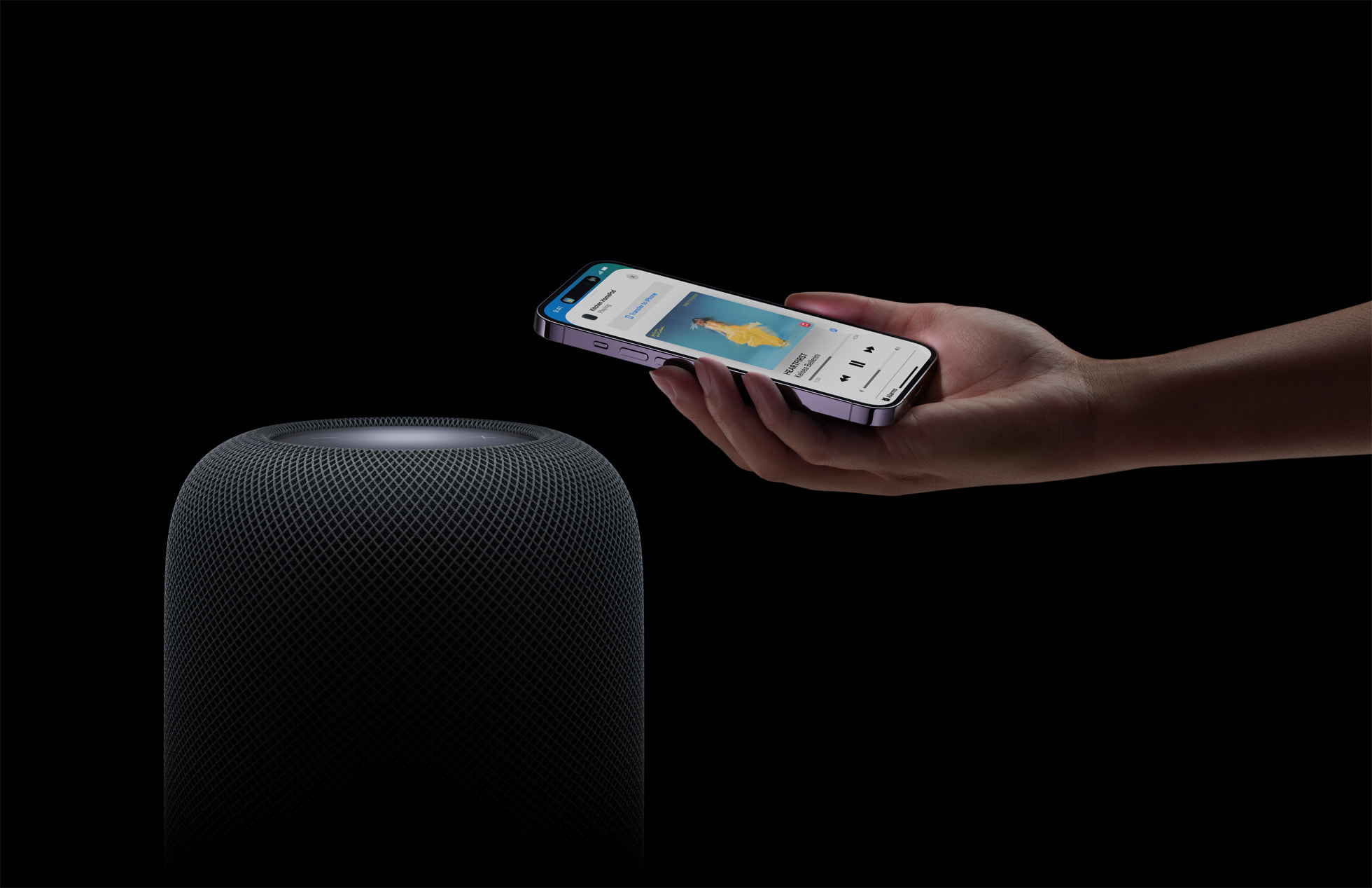
Anyone in the room can hold their iPhone near HomePod and playback suggestions will appear on the iPhone screen, making it easy to control audio playback or get personalized music and podcast recommendations.
Smart home essential.
With the sound recognition feature, HomePod can detect the sound of smoke or carbon monoxide alarms and send notifications directly to the user’s iPhone. The new built-in temperature and humidity sensor can measure the indoor environment, allowing users to set up automation such as closing curtains when the room reaches a certain temperature or turning on a fan.
Using Siri, customers can control individual devices or create scenes without lifting a finger, such as having multiple smart home devices start working simultaneously in the morning, or setting up recurring automations, like “Hey Siri, open the curtains every morning at sunrise.” When users control accessories such as heating or devices in different rooms via Siri, HomePod will provide new confirmation sounds. The redesigned ocean, forest, rain, and other ambient sounds will also be integrated into the experience, allowing customers to add new sounds to their scenes, automations, and alerts.
Users can also intuitively control, view, and manage accessories in the redesigned Home app. The Home app provides new categories such as “Environment”, “Lights”, and “Security”, and offers a new multi-room view, enabling users to easily set up and control their smart home devices.
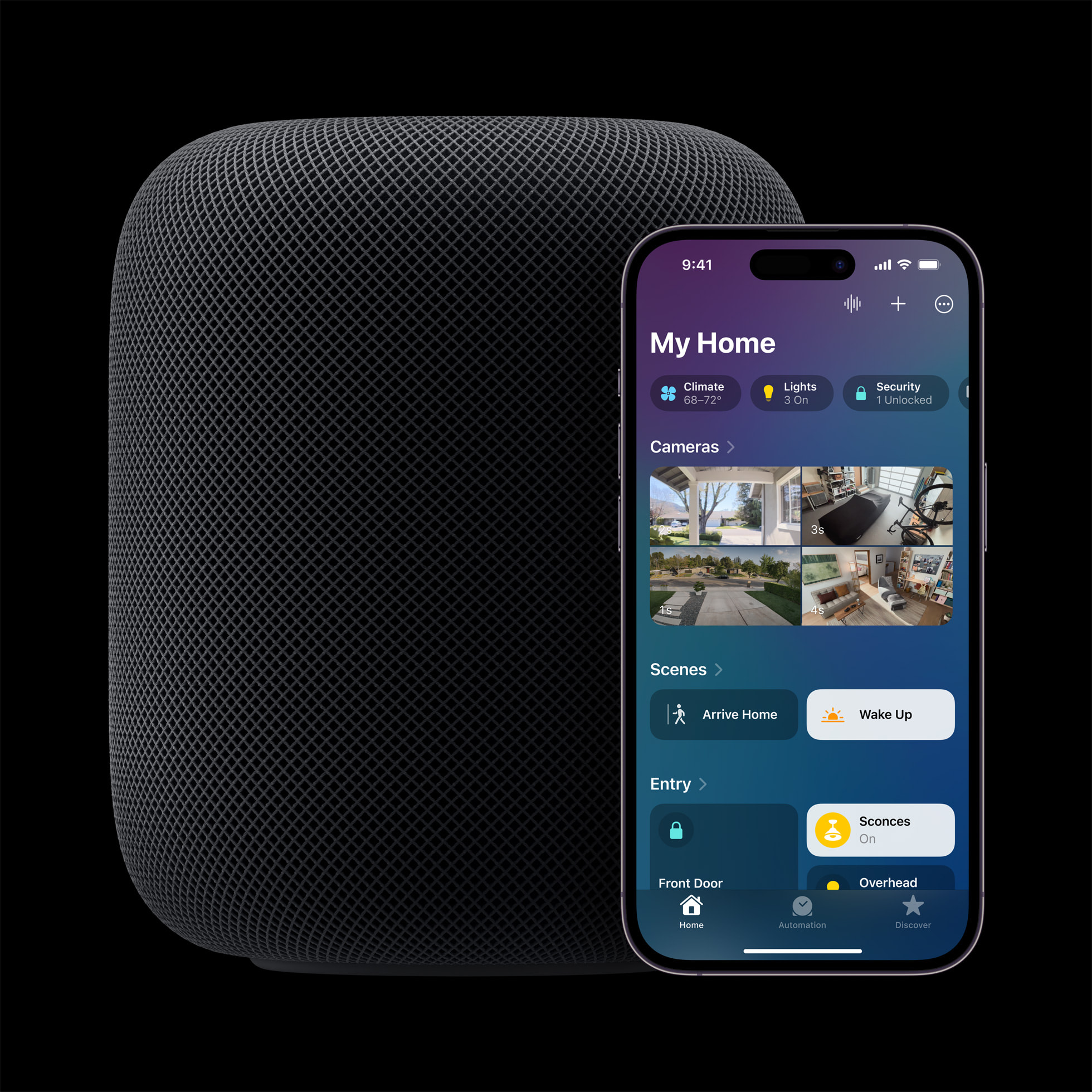
Users can intuitively control, view, and manage accessories in the redesigned Home app. The Home app provides new categories such as "Environment," "Lighting," and "Security," and offers a new multi-room view, allowing users to easily set up and control smart home devices.
Matter Support
Last fall, the Matter connectivity standard was launched to ensure that smart home products maintain the highest level of security when working across ecosystems. Apple is a member of the Connectivity Standards Alliance, which maintains the Matter smart home connectivity standard together with other industry leaders. HomePod can connect to and support Matter-enabled accessories, serving as a home hub that allows users to control their devices remotely even when they’re away from home.
Customer Data Belongs To Private Property
Protecting customer privacy has always been a core value for Apple. All communication between smart home devices is always end-to-end encrypted, including content recorded by HomeKit security cameras, which cannot be read by Apple. When using Siri, audio requests are not stored by default. These features ensure that users’ home privacy is protected.
HomePod With The Environment
HomePod is committed to minimizing its impact on the environment by using 100% recycled gold in the plating layers of multiple printed circuit boards (a first for HomePod), and 100% recycled rare earth elements in the speaker magnets. HomePod meets Apple’s stringent energy efficiency standards and does not contain mercury, brominated flame retardants (BFRs), polyvinyl chloride (PVC), or beryllium. The redesigned packaging materials no longer use plastic shrink wrap, and 96% of the packaging materials are fiber-based, bringing Apple closer to its goal of completely eliminating plastics from packaging by the end of 2025.
Apple has currently achieved carbon neutrality in its global operations and plans to achieve 100% carbon neutrality in its entire supply chain and product life cycle by 2030. This means that every Apple device sold, from parts manufacturing, assembly, transportation, user use, charging, and device and material recycling, will achieve net zero climate impact.
Price and release date
The HomePod (2nd generation) is priced at RMB 2299 in Mainland China, and is now available for pre-order through apple.com.cn/store and the Apple Store app for customers in Australia, Canada, Mainland China, France, Germany, Italy, Japan, Spain, the United Kingdom, the United States, and 11 other countries and regions. It will be officially released on February 3rd (Friday).
The HomePod (2nd generation) supports iPhone SE (2nd generation) and later models or iPhone 8 and later models running iOS 16.3 or later; iPad Pro, iPad (5th generation) and later models, iPad Air (3rd generation) and later models, or iPad mini (5th generation) and later models running iPadOS 16.3.
New HomePod users will receive a free 6-month subscription to Apple Music.
About Apple
Apple launched the Macintosh in 1984, which brought about a great revolution in personal technology. Today, Apple leads the world in innovation with the iPhone, iPad, Mac, Apple Watch, and Apple TV. Apple’s five software platforms, iOS, iPadOS, macOS, watchOS, and tvOS, provide a seamless user experience across all Apple devices, while groundbreaking services such as the App Store, Apple Music, Apple Pay, and iCloud empower people with greater capabilities. Apple’s more than 100,000 employees are dedicated to creating the world’s best products and making the world a better place.
Apple Music requires a subscription
Multi-room audio requires multiple HomePods or speakers that support AirPlay 2 and are running the latest AirPlay 2 software.
Creating a stereo pair with HomePod requires two of the same model, such as two HomePod minis, two HomePods (2nd generation), or two HomePods (1st generation).
To use Handoff on iPhone, you need to be running iOS 16.3 or later.
The sound recognition feature will be released later this spring through a software update. The sound recognition feature can detect smoke and carbon monoxide alarm sounds and send notifications to users upon recognition. The sound recognition feature should not be relied upon in environments where users may be at risk of harm or in high-risk or emergency situations. The sound recognition feature requires an updated HomeKit architecture, which will be released in a separate update to the Home app. It requires all Apple devices connected to home accessories to be running the latest software version. Smart home accessories need to be purchased separately.
Pernyataan hak cipta: Cetak ulang gratis - non-komersial - non-turunan - pertahankan atribusi (lisensi Creative Commons 3.0)
Penulis: Apple Newsroom Tanggal:2035 3 25